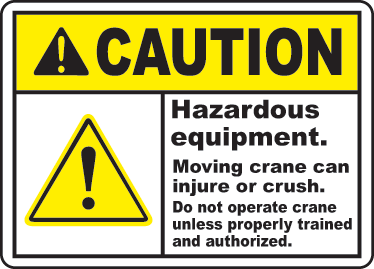
A recent decision of the Sixth Circuit of Appeals in All Erection & Crane Rental Corp. (2012 WL 6028627, Dec. 5, 2012) upheld a citation alleging that an employer failed to barricade a crane's swing radius. Despite no injury and OSHA's failure to actually observe an employee in the hazardous area, the Sixth Circuit concluded employee exposure to the hazard existed because “employees had access to the violative condition.” Although it may appear that this case will open the flood gates for employer liability, there is no need to hit the panic button.
OSHA must show four factors to make its prima facie case needed to sustain a citation: (1) the cited standard applied, (2) the employer did not comply with the terms of the cited standard, (3) employees were exposed to the violative condition, and (4) the employer knew or could have known about the existence of the violative condition.
At issue on review in All Crane was whether employees were exposed to a crane’s hazardous swing radius behind the crane where only one side was barricaded. The employer argued that as a matter of practicality, employees were never actually exposed to the hazard on the barricade-free side because the crane never pivoted in that direction – work was only being performed in front of the crane, to the left. In light of this and the fact that the crane’s right end was blocked off to employees, the employer submitted that OSHA had failed to demonstrate employee exposure.
The Sixth Circuit rejected the employer’s argument stating that “[OSHA] need only prove that employees had access to the violative condition.” The court went on to say that “[OSHA] need not prove that employees were actually exposed to the conditions, but only that it was reasonably predictable that employees would be in the zone of danger.”
In 1997, the Review Commission articulated what is now considered to be the most succinct and contemporary form of the “reasonable predictability” standard: in order to establish employee exposure to a given hazard, OSHA “must show that it is reasonably predictable either by operational necessity or otherwise (including inadvertence), that employees have been, are, or will be in the zone of danger.” Fabricated Metal Products, Inc., 18 O.S.H. Cas. (BNA) 1072 (O.S.H.R.C. Nov. 7, 1997).
They key to the “reasonable predictability” analysis is the nature of the employee’s duties/activities on the job and how they potentially place the employee in harm’s way with the hazard at issue. For example, in Fabricated Metal, the Review Commission looked to the following factors to determine there was no employee exposure with regard to a machine guarding citation: (1) employees did not have any normal work duties that brought them near one of the machine’s point of operation, (2) it was highly unlikely a slip or fall would lead to inadvertent access because one of the machine’s points of operation only had a ¼” opening, (3) direct access to the machine’s points of operation was severely limited by several barrels placed in the way, (4) the designated walkways were wide enough so that an employee could safely walk by, and (5) the designated work areas allowed employees to maintain a distance of at least 2’ from the hazardous point of operation at all times.
The Sixth Circuit looked to the same type of indicators when determining whether employee exposure existed in All Crane. In supporting its affirmative finding, the court noted that the crane oiler’s work brought him within the crane’s swing radius while it operated. Furthermore, the court agreed with the Administrative Law Judge’s finding that employees were required to walk behind the crane when entering the job site. In the court’s view, these two facts made employee exposure to the hazard “reasonably predictable.” Notice that actual exposure was irrelevant to the court’s analysis.
Contrary to what All Crane may suggest on its face, there has been no fundamental change to the landscape of OSHA jurisprudence. As has been the case since 1976, the inquiry into employee exposure is not about “whether exposure is theoretically possible. Rather, the question is whether employee entry into the danger zone is reasonably predictable” in light of the employee’s duties and how they interact with their work environment.
Authors: Mark S. Dreux and Matthew C. Thorne
Source: Lexology.com